Did you know that interactive dog toys were among the top five most-purchased pet products this year? If you’re looking to transform your dog’s playtime, enhance their mental stimulation, and strengthen your bond, you’re in the right place. This comprehensive buyer’s guide reveals the latest enrichment toys, unbiased reviews, expert tips, and all you need to make your pup’s tail wag with delight.
Why Interactive Dog Toys Are a Must-Have for Every Dog Owner in 2024
-
Interactive dog toys ranked as one of the top five most-purchased pet products of the year—learn why they're transforming playtime for dogs and dog owners alike.
“Dogs need more than walkies—they crave mental stimulation and enrichment toys that challenge their minds as much as their bodies.” —Pet Behaviorist Dr. Amy Combs
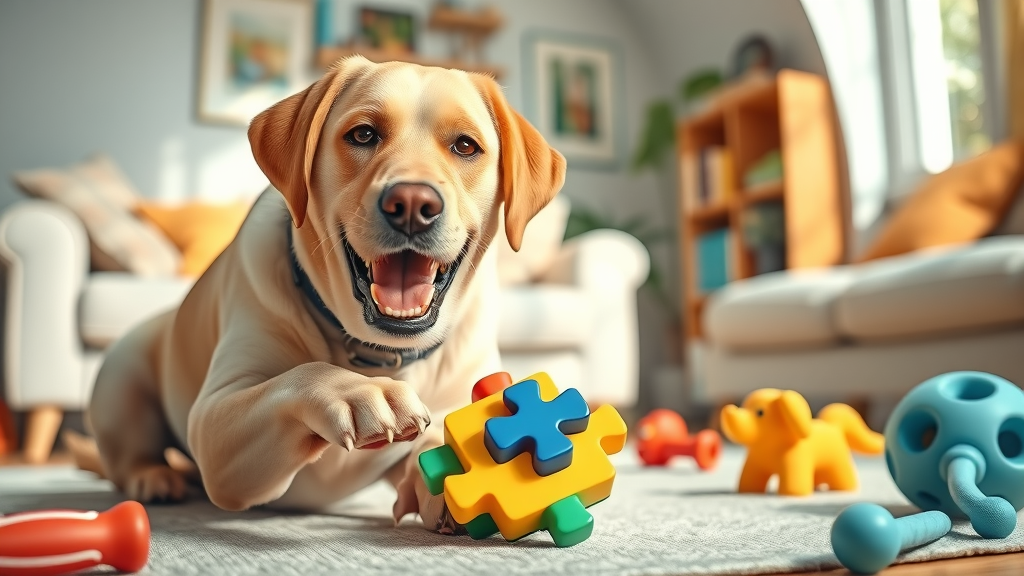
In 2024, interactive dog toys are more than just a passing trend—they are an essential tool for every modern dog owner focused on their pet’s well-being. With the growth of urban living and increased awareness about canine mental health, pet owners are seeking enrichment toys and puzzle toys that do more than simply occupy a dog. These toys stimulate your dog’s senses, promote independent problem-solving, and offer a practical solution for burnoff extra energy while you’re away or working from home.
Brands like West Paw , Kong, and Nina Ottosson have revolutionized the market by offering dog toys that blend durability with fun, delivering hours of engagement for dogs of every size and breed. Whether you have a large breed that’s an aggressive chewer or a small pup in need of gentle stimulation, today’s interactive dog toys are designed to address boredom, reduce destructive behaviors, and enhance playtime for both pets and their owners. Integrating these toys into your routine can yield a calmer, happier, and healthier dog—making the investment a win for the whole household.
What You’ll Learn About Interactive Dog Toys and Enrichment Toys
-
The science behind interactive dog toy popularity
-
Types of enrichment toys and interactive dog toys on the market
-
Real product reviews, ratings, and price comparisons
-
Tips for selecting the right interactive dog toy for your dog’s size, breed, or play style
-
Safety, durability, and entertainment value breakdown for dog toys
Throughout this guide, you’ll gain valuable insights into why enrichment toys are transforming dog care, how to choose the best ones based on your dog’s needs, and must-see reviews of the top dog toys of 2024. Whether you’re a first-time dog owner or a seasoned handler, this resource will help you make informed, hassle-free buying decisions for interactive toys that bring out the best in your beloved pet.
The Benefits of Interactive Dog Toys for Mental Stimulation and Bonding
How Interactive Dog Toys Provide Essential Mental Stimulation
-
Preventing boredom with puzzle toys and enrichment toys
-
Encouraging natural instincts through interactive play
-
Reducing anxiety and destructive behaviors
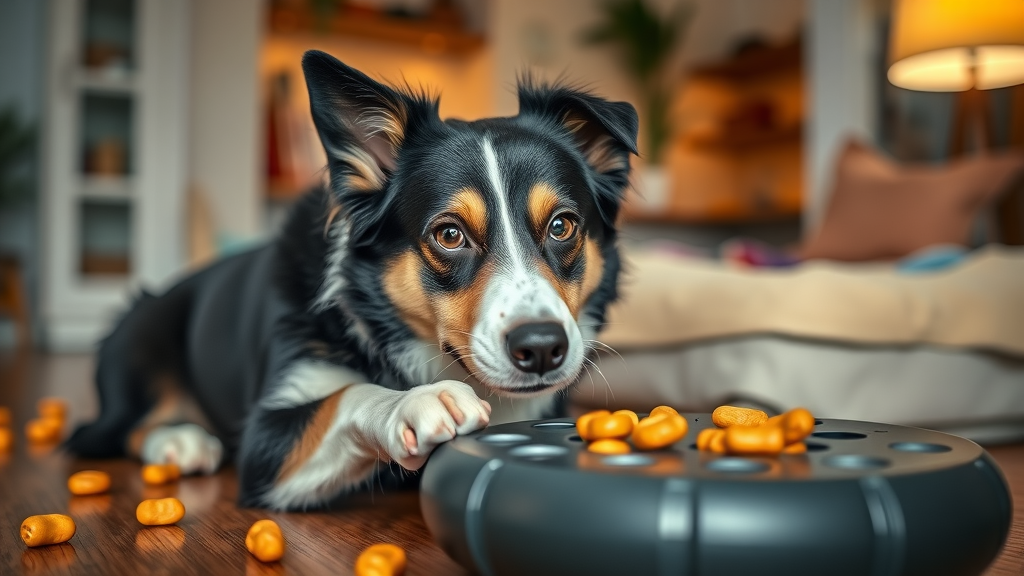
Interactive dog toys and enrichment toys do more than just entertain—they work your dog’s mind in ways that traditional toy balls or stuffed animals simply can’t. Puzzle toys, treat-dispensing toys, and lick mats engage dogs cognitively by challenging them to problem-solve, which is vital for mental stimulation. Studies show that mental enrichment is crucial for reducing boredom and minimizing anxiety, especially for intelligent breeds like Border Collies or energetic puppies who otherwise risk developing destructive habits.
Enrichment toys encourage natural canine behaviors such as sniffing, foraging, and pawing, all while providing positive reinforcement that keeps your dog striving for a reward. By introducing a variety of stimulating toys into your dog’s environment, you not only prevent boredom but also channel your pet’s instincts in healthy, non-destructive ways. This shift from simple entertainment to real dog enrichment could be the key to a calmer and happier life for your best friend.
Interactive Dog Toys and the Bond Between Dog Owner and Pet
-
Strengthening relationships through play
-
Improving communication with your dog
-
Creating shared routines using interactive dog toys
The advantages of interactive dog toys extend beyond just solo amusement—they provide opportunities for dog owners to strengthen their bond with their pets. By actively engaging with your dog in play sessions using tug toys, puzzle games, or treat-dispensing toys, you create shared experiences that reinforce trust and effective communication. These activities not only make training easier but also help your dog develop positive associations with learning and following cues.
Establishing a routine centered around enrichment and interactive play brings structure to your dog’s day and ensures consistent engagement. When owners participate in puzzle games or interactive play, dogs often become more responsive, cooperative, and joyful. Over time, this leads to a lasting bond, mutual understanding, and a sense of teamwork that makes every day more rewarding for both of you.
How to Choose the Best Interactive Dog Toy: Key Features and Criteria
Match Interactive Dog Toys to Your Dog’s Breed, Size, and Temperament
-
Dog toys for large breeds, aggressive chewers, and puppies
-
Materials, safety features, and durability standards
-
Popular dog toy brands, including West Paw
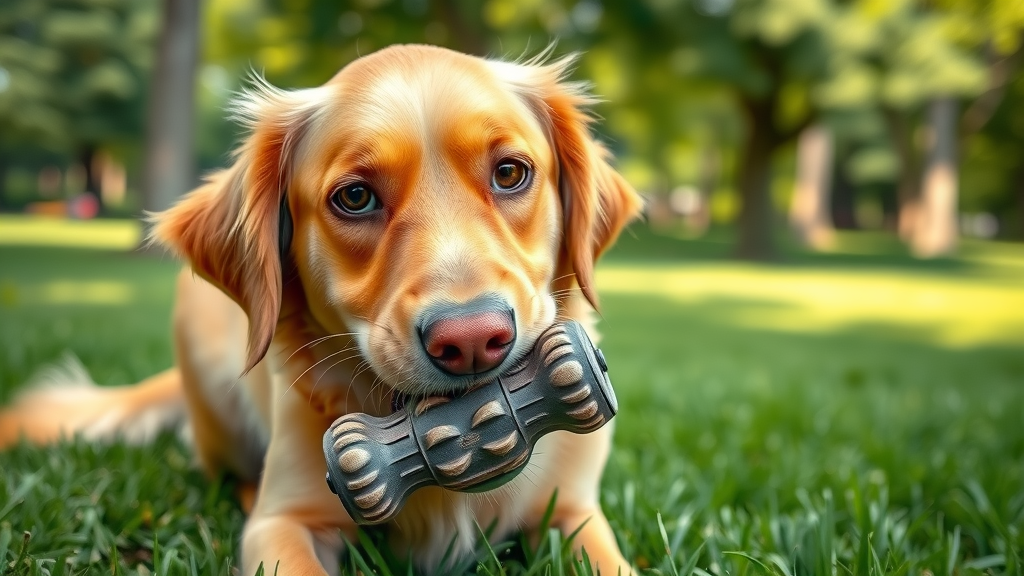
Choosing the perfect interactive dog toy starts with understanding your dog’s size, breed, and individual play style. Large breeds like German Shepherds or Labradors need extra-durable enrichment toys that can withstand strong jaws and aggressive chewers. Puppies and smaller dogs, on the other hand, benefit from softer puzzle toys and pet toys that challenge their developing minds without posing a safety risk. Reputable brands such as West Paw are known for high safety and durability standards—look for non-toxic materials, reinforced seams, and toys rated for both small and large breeds.
Safety should always be at the forefront of your decision. Inspect toy labels for chew resistance, BPA-free plastics, or food-grade silicone. Review ratings to see how toys stand up to heavy play, especially if your dog loves to chew relentlessly. Matching toys to your pet’s temperament ensures they’ll remain interested and safe, while you’ll gain peace of mind that your investment will last.
What Makes an Enrichment Toy Stand Out?
-
Interactive dog toys that dispense treats or peanut butter
-
Lick mat varieties versus classic chew toy models
-
The role of puzzle toys for mental exercise
The best enrichment toys combine durability with novelty, offering dogs a rewarding challenge that keeps them coming back for more. Treat-dispensing toys —whether they distribute kibble, healthy snacks, or peanut butter—add motivation and excitement to playtime. Lick mats soothe anxious pups through repetitive licking and can be loaded with tasty spreads, making them ideal for calming routines or slow feeding.
Puzzle toys , from multi-step games to beginner treat-hiding models, actively work your dog's brain and are especially prized for their mental stimulation benefits. The real standouts in the market balance all these factors while remaining easy to clean, tough to destroy, and fun across a range of play styles.
Best Interactive Dog Toys of the Year: Top Picks and In-Depth Reviews
Top 10 Interactive Dog Toys and Enrichment Toys for Every Play Style
-
West Paw Zogoflex Puzzle Toy
-
Nina Ottosson Outward Hound Dog Puzzle Toy
-
Kong Classic Interactive Dog Toy
-
PetSafe Busy Buddy Treat Dispenser
-
LickiMat Soother Lick Mat
-
Tug-A-Jug Pet Toy
-
Boredom Buster Enrichment Toy
-
SmartPetLove Snuggle Puppy Interactive Toy
-
Benebone Chew Toy for Aggressive Chewers
-
IQ Treat Ball Puzzle Toy
“After a week with the West Paw puzzle toy, my large dog’s destructive chewing finally stopped—it’s the only dog toy that kept him entertained for hours.” —Verified Buyer
Each of these interactive dog toys brings something unique to the table, accommodating all sizes, breeds, and behavioral needs. For example, the Kong Classic is a staple for aggressive chewers, while the LickiMat is beloved by owners seeking to calm anxious pups or slow down rapid eaters. Those wanting to test their dog’s intelligence gravitate to challenging puzzle toys like the Nina Ottosson Outward Hound . Finally, enrichment toys such as SmartPetLove Snuggle Puppy use warmth and heartbeats for comfort-driven interaction—a true innovation in the dog toy market.
Whether you’re searching for an indestructible chew toy for a large breed or a beginner puzzle game for your curious puppy, this top ten list ensures there’s a match for your dog’s personality. Ratings, reviews, and real user testimonials further guide your decision so your next purchase addresses your pup’s boredom, anxiety, and play preferences.
Side-by-Side Comparison Table: Features, Prices, Durability, and Mental Stimulation
|
Brand |
Toy Name |
Price |
Best For |
Durability |
Mental Stimulation |
Enrichment Rating |
|---|---|---|---|---|---|---|
|
West Paw |
Zogoflex Puzzle |
$$ |
Large Dog |
High |
Excellent |
5/5 |
|
Outward Hound |
Nina Ottosson |
$$ |
Puzzle Toy Lovers |
Medium |
Very Good |
4.5/5 |
|
Kong |
Classic |
$ |
Aggressive Chewers |
High |
Good |
4/5 |
How to Use Interactive Dog Toys for Maximum Enrichment
-
Rotate interactive toys and enrichment toys to keep them interesting
-
Incorporate peanut butter or healthy treats into puzzles and lick mats
-
Supervise and adjust toy selection for aggressive chewers

Achieving the most enrichment from interactive dog toys requires both variety and some creativity. Rotate different puzzle toys, chew toys, and lick mats weekly to prevent your dog from losing interest. Swap out treat-dispensing toys with enrichment toys that encourage new skills or challenge them at a different difficulty level. For food-motivated pups, try filling a puzzle toy with a dollop of peanut butter or freeze dog food in a Kong for a prolonged, rewarding experience.
Supervision is especially important for aggressive chewers or powerful jaws. Observe how your dog interacts with new toys, and upgrade to tougher options if you notice signs of wear. This proactive approach keeps playtime safe, stimulating, and rewarding, no matter how energetic or determined your dog may be.
Interactive Dog Toys Demo: See Real Dogs at Play
Sometimes, seeing is believing. Our video playtests feature small, medium, and large dogs tackling a range of interactive dog toys: from intricate puzzle toys and enrichment toys to simple lick mats and classic chew toys. Watch how different breeds approach challenges, engage with their favorite dog toy, and enjoy endless fun while staying mentally sharp and entertained.
Targeting Specific Needs: Interactive Dog Toys for Large Breed and Aggressive Chewers
Large Dog and Aggressive Chewer Favorites
-
Durable chew toy and enrichment toy picks with positive reviews
-
Pet-safe materials that withstand powerful jaws
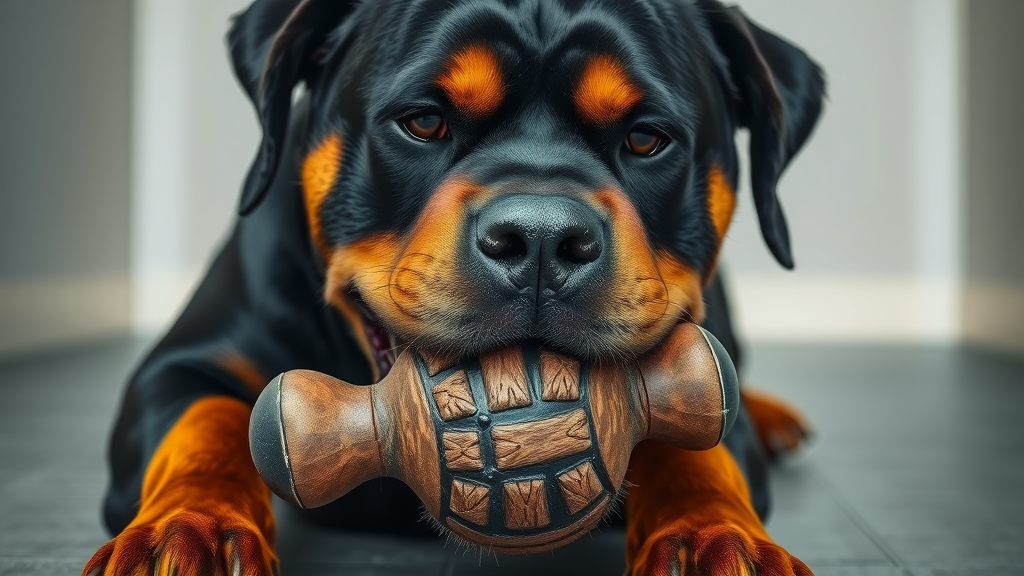
For those with a large breed or a notorious aggressive chewer , choosing the right dog toys is non-negotiable. Sturdy, high-quality materials such as reinforced rubber, heavy-duty nylon, or specialty plastics (as used in West Paw or Kong products) can stand up to the most determined jaws. Many toys now feature multiple textures, hidden compartments, and even built-in safety features to withstand the punishment from large dogs, giving you confidence that play sessions remain safe and long-lasting.
Reading customer reviews and noting verified durability is invaluable. Invest in toys specially designed to outsmart powerful chewers, and replace items once they show significant wear. With the right interactive toy, even the toughest dog will be challenged and satisfied, curbing destructive impulses and turning their energy into positive play.
Creative Ways to Use Peanut Butter and Treats With Interactive Dog Toys
-
Adding peanut butter to puzzle toys and lick mats for extra fun
-
Treat-dispensing puzzle toy recipes
-
Safety tips: Nut-safe and non-toxic options for dogs
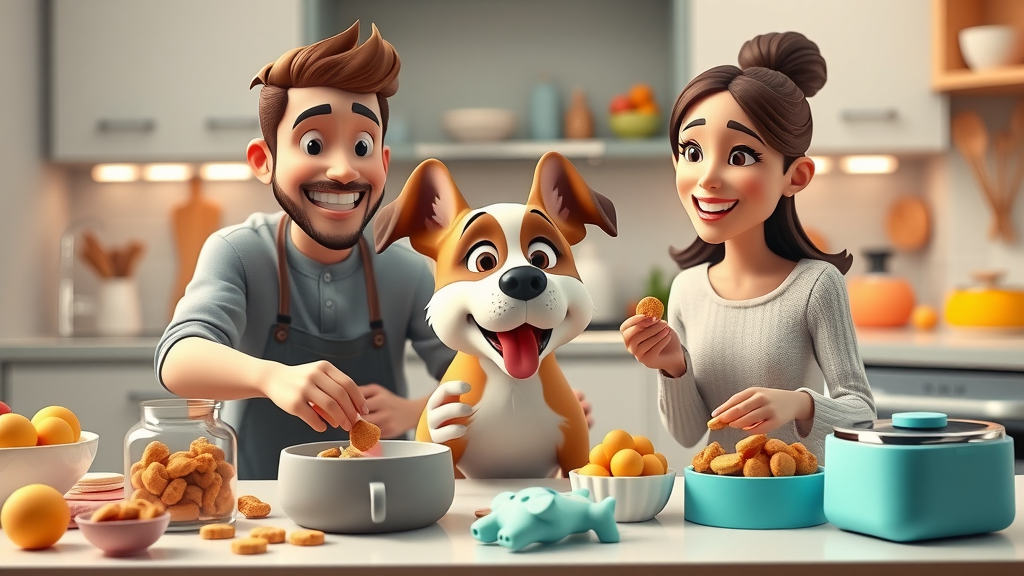
Peanut butter and tasty spreads can take interactive dog toys to the next level! For a quick win, smear a lick mat with unsweetened, nut-safe peanut butter (always check for xylitol!) or layer healthy dog food into a Kong before freezing. These tricks turn enrichment toys into satisfying, longer-lasting activities that keep your pup engaged on rainy days or during busy family routines.
You can make your dog’s treat experience even more exciting by crafting simple recipes: mix banana and yogurt with peanut butter, stuff inside treat-dispensing puzzle toys, and freeze for maximum challenge. Always use dog-safe ingredients and supervise treat play to prevent choking or overconsumption. This approach ensures your dog’s interactive toy experience is both delicious and safe, cementing enrichment routines as a highlight of your dog’s day.
Dog Owner Tips: Keeping Interactive Dog Toys Fresh, Exciting, and Safe
-
Cleaning and maintaining enrichment toys and puzzle toys
-
Rotating interactive dog toys to prevent boredom
-
Early signs your dog outgrew a toy (when to upgrade)
“Swapping out our interactive dog toys every week means constant excitement—our dog can’t wait for the next surprise!” —Dog Owner
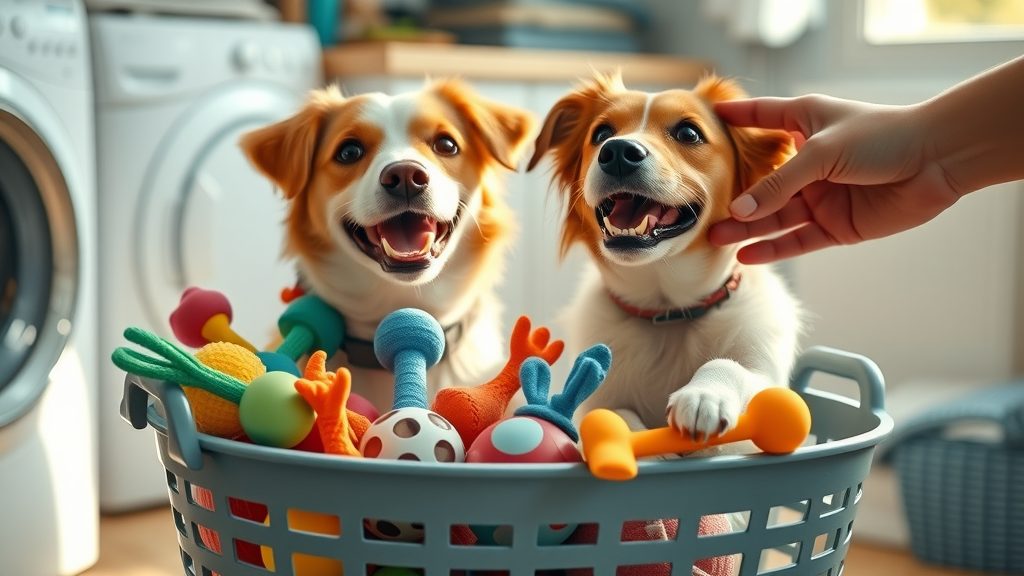
To maximize the value and lifespan of your interactive dog toys , institute a cleaning schedule—many enrichment toys are dishwasher-safe for easy maintenance. Regular cleaning reduces pathogens, keeps toys fresh-smelling, and encourages your dog to keep exploring. Rotate toys weekly to pique interest, hiding some away for a few days so each reintroduction feels brand new.
Watch for cues that your dog has lost interest or outgrown a toy: reduced enthusiasm, inability to achieve the reward, or noticeable wear (especially with aggressive chewers). Upgrading to more challenging puzzle toys or switching styles ensures your dog’s enrichment journey never grows stale—and they’ll stay happy and mentally sharp.
People Also Ask: Interactive Dog Toys FAQs
What toy will keep my dog entertained?
-
Dogs are captivated by interactive dog toys such as puzzle toys, treat dispensers, and enrichment toys like lick mats or tug toys, which cater to their natural instincts and stave off boredom for hours.
The most effective toys for endless dog entertainment are puzzle games , treat-dispensing toys, and enrichment toys that challenge your pet to think, sniff, and play. A stimulating dog toy not only holds attention but also nurtures natural foraging and problem-solving skills, ensuring your dog remains active even when you’re not home.
What toys mentally stimulate dogs?
-
Puzzle toys, enrichment toys, and interactive dog toys designed for treat discovery provide the mental stimulation dogs need to stay engaged and fulfilled.
Interactive dog toys —especially those that require outsmarting a puzzle or sniffing out hidden rewards—are the gold standard in canine mental stimulation. Lick mats, rotating puzzle toys, and complex treat mazes keep your dog’s brain engaged, preventing boredom and supporting their emotional health.
Are interactive toys good for dogs?
-
Yes, interactive dog toys are excellent for dogs. They offer enrichment, foster cognitive skills, alleviate boredom, and encourage healthy activity, benefiting both dogs and dog owners.
Interactive toys are one of the best investments you can make for your pet’s happiness and well-being. They help burn energy, support problem-solving abilities, and create positive play routines that enhance the human-dog bond.
What is the best stimulating game for dogs?
-
Hide-and-seek with puzzle toys or interactive dog toys that dispense treats is widely regarded by trainers and pet experts as one of the best stimulating games for dogs.
Incorporating hide-and-seek using a puzzle toy or enrichment toy is a surefire way to both mentally and physically engage your dog. This interactive approach uses natural instincts to sniff out treats or toys, making playtime both fun and rewarding.
Addressing Common Concerns About Interactive Dog Toys
-
Safety tips for choosing enrichment toys and interactive dog toys
-
How to select age-appropriate and breed-appropriate dog toys
-
Myths about aggressive chewers and toy destruction
Not all dog toys are created equal: always select enrichment toys made from non-toxic, pet-safe materials, especially for large dogs or aggressive chewers. Age and breed-appropriate sizing minimizes choking risks and optimizes enrichment value. Don’t be discouraged by the occasional toy that doesn’t last—rotate, supervise, and select products engineered for your dog’s unique play style to see the best results.
Customer Favorites: Interactive Dog Toy Success Stories
-
Happy dog owner testimonials and before/after stories
-
Stories from large breed and rescue dog families
-
Tips for integrating new enrichment toys into multiple dog households
“Interactive dog toys saved our furniture and our sanity! Our rescue dog is finally happy and calm with his new favorite puzzle toy.” —Pet Owner
Across multiple households, enrichment toys have proved invaluable in preventing destructive behaviors, easing separation anxiety, and fostering joy in newly adopted or nervous pets. Many owners report dramatic positive changes after introducing just a few interactive dog toys—especially in homes with multiple dogs competing for attention. Whether you’re rehabilitating a rescue or seeking to enrich a senior dog’s retirement, the right toys can make all the difference.
Where to Buy the Best Interactive Dog Toys: Retailers, Online Stores, and Local Pet Shops
-
Trusted online retailers featuring interactive dog toys and enrichment toys
-
Buyer's guide: How to secure warranties and deals for dog toys
-
Supporting local pet shops—unique finds for every dog
You can find the top-rated interactive dog toys at major e-commerce sites, specialty pet retailers, or your favorite local pet shop. Shopping online offers customer reviews, product comparisons, and exclusive bundle deals—be sure to check return policies and warranties for added security. Meanwhile, supporting your neighborhood shop means expert advice and discovering unique dog toy finds for every breed and play style.
Quick Comparison List: Interactive Dog Toys at a Glance
-
West Paw Zogoflex Puzzle Toy: Best for large dog, durable
-
Nina Ottosson Outward Hound: Innovative puzzle toy design
-
Kong Classic: Aggressive chewer favorite
-
LickiMat: For calming and enrichment
-
SmartPetLove: Comfort-driven interactive toy
This quick comparison list highlights favorites across categories so you can find the perfect interactive toy for your dog’s needs—prioritizing durability, engagement, and mental stimulation.
Expert Insights: What Makes a Great Interactive Dog Toy?
“A truly enriching dog toy adapts to a dog’s natural instincts and delivers mental stimulation without sacrificing safety or durability.”—Dr. Marc Raymond, DVM
-
Key qualities: material quality, challenge level, enrichment factor
-
The importance of rotating toys and offering variety
-
Trends in interactive dog toy innovation for 2024
According to veterinarians and canine behaviorists, the best dog enrichment toys balance challenge, variety, and quality. Toys that evolve with your dog’s skills, introduce new puzzle elements, and utilize pet-safe materials will always stand out. The 2024 trend is clear: innovation in interactive toys is driven by the goal of deeper engagement and lasting enrichment, not just fleeting fun.
Frequently Asked Questions About Interactive Dog Toys
-
Are interactive dog toys safe for puppies?
-
How often should I replace enrichment toys?
-
What’s the difference between a chew toy and an enrichment toy?
Interactive dog toys are generally safe for puppies when matched to their age and chewing strength—look for toys specially labeled for young dogs. Routine replacement is essential: swap out toys the moment they show significant wear, or every few months for maximum freshness and engagement. The primary distinction? Chew toys satisfy chewing urges, while enrichment toys stimulate the mind and often include puzzle or treat-dispensing features for added challenge.
Elevate Your Dog's Routine with Interactive Dog Toys
-
Keep your pup happy, healthy, and engaged—discover fun, easy activities for dogs that boost bonding, burn energy, and beat boredom every day! Shop now for the best interactive dog toys and enrichment toys to transform your dog's playtime.
Ready to energize your dog's day-to-day life? Choose the best interactive dog toys from this guide, rotate them often, and watch your dog’s boredom vanish as enrichment and joy take center stage!
Interactive dog toys are essential for keeping your canine companion mentally stimulated and physically active. To further enhance your understanding and selection of these toys, consider exploring the following resources:
-
“15 Best Interactive Dog Toys 2022 - Fun Interactive Dog Feeder and Treat Balls” by Good Housekeeping provides a curated list of top interactive dog toys, including detailed reviews and purchasing options. ( goodhousekeeping.com )
-
“11 Best Interactive Dog Toys, According to Trainers” by The Dodo offers expert recommendations on interactive dog toys, highlighting their benefits and suitability for various play styles. ( thedodo.com )
These articles offer valuable insights into the best interactive dog toys available, helping you make informed decisions to keep your dog engaged and happy.
 Add Row
Add Row  Add
Add 





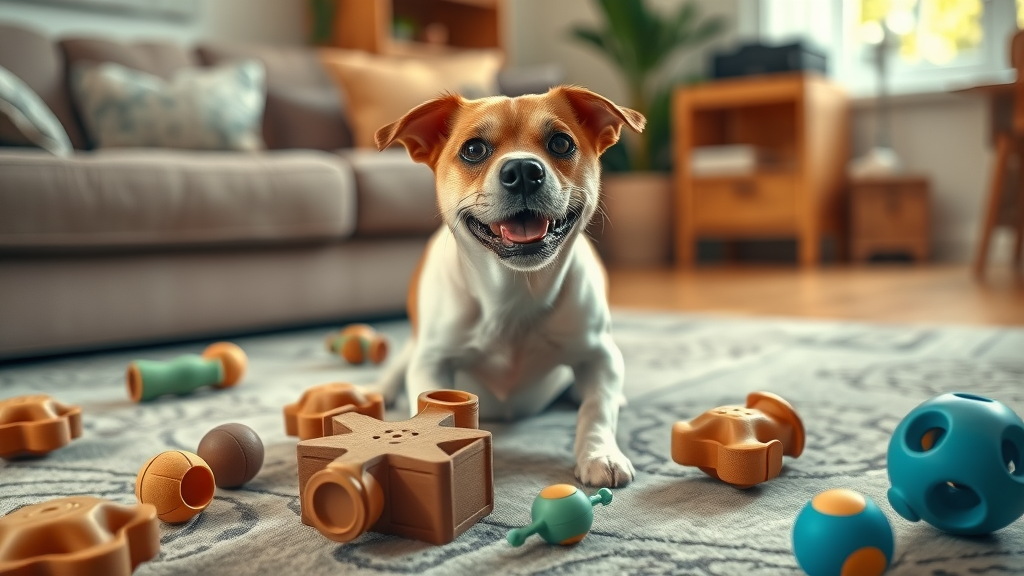
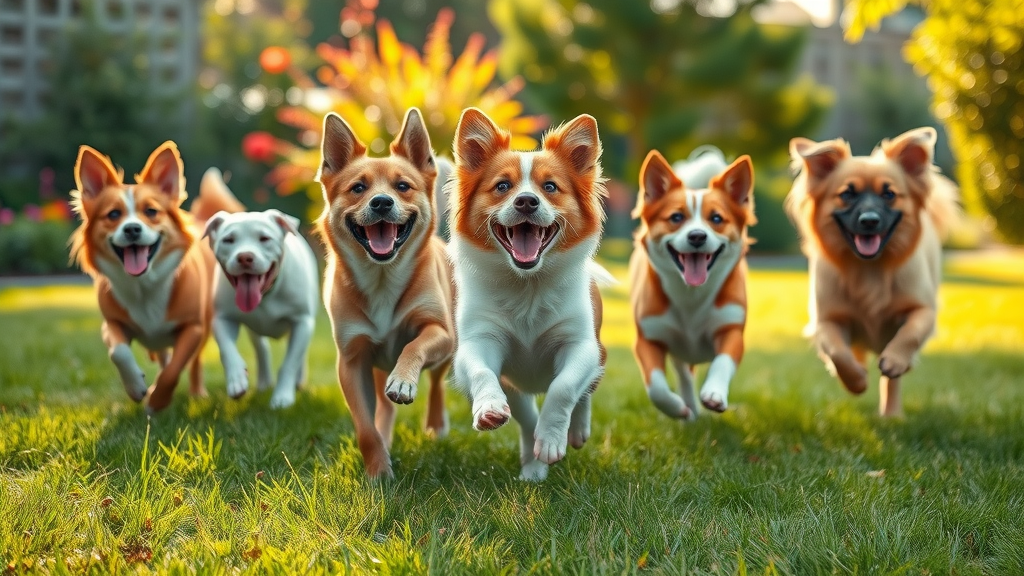

Write A Comment